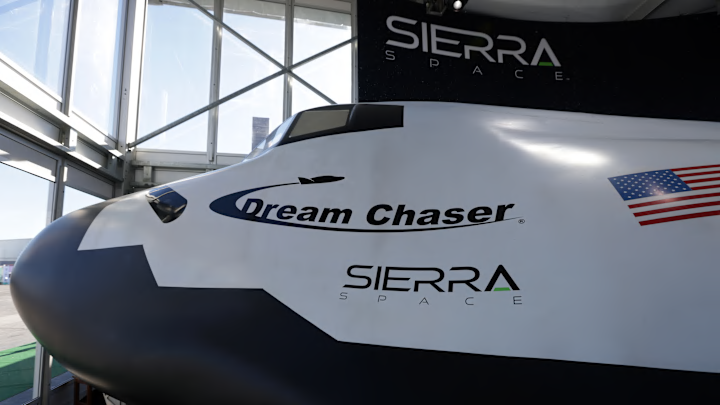There has been a lot of news regarding rocket design and space travel over the past several years, with NASA, Boeing, SpaceX, and Blue Origin being major developers in the US and many others around the world. Sierra Space is now a new player in the game, and their Dream Chaser spaceplane hopes to redefine commercial space transportation.
What is the Dream Chaser spaceplane?
Sierra Space developed the Dream Chaser spaceplane as a reusable ship that can transport cargo and even people to low-orbit destinations, including the International Space Station (ISS). It’s a compact vehicle, and one of the first things you’ll notice is its small size, especially if you are used to looking at SpaceX rockets.
Its unique winged design allows for runway landings at conventional airports, which is a big step in making future flights more cost-effective and practical. Its modular design will enable engineers to customize it for a wide range of missions, from satellite deployment to servicing in-orbit stations. It can also integrate with different rocket systems, which makes it even more versatile.
How new technologies are shaping the future of space exploration
Environmental considerations
One of the biggest problems with space travel is the damage it does to the environment. The Dream Chaser is taking steps to mitigate that by making the spacecraft reusable. Its reusability reduces the need to manufacture multiple spacecraft for repeated missions, which conserves resources.
Landing on standard runways also prevents the need for splashdowns in the ocean, which can disrupt marine life. Splashdowns also require complex recovery operations involving ships, divers, and specialized equipment, which can also disrupt oceanic environments and raise costs. These softer landings are also good when returning sensitive experiments and cargo.
Mission profile and progress
The Dream Chaser is preparing for its inaugural mission to the ISS under NASA’s Commercial Resupply Services 2 (CRS-2) contract. It will likely take place in May 2025 and will mark the first time a commercial spaceplane performs a cargo resupply.
The Dream Chaser can deliver up to 5,500 kilograms of cargo to the ISS and will play a critical role in supporting scientific research and station maintenance. Over the coming years, the spaceplane will attempt to complete multiple resupply missions, which could lead to even more missions if all goes well.
Competing with SpaceX
SpaceX has set a high bar in commercial spaceflight with its Dragon spacecraft, which offers proven reliability and has become a staple for ISS resupply and crewed missions. However, the Dream Chaser sets itself apart with its winged design and runway landing capability, which can prolong the lifespan of delicate equipment and enable faster access to returned cargo.
By addressing the growing demand for reusable and environmentally friendly spacecraft, the Dream Chaser positions itself as a complementary alternative to SpaceX’s offerings, fostering healthy competition and innovation in the industry.
Follow GeekSided to let us know what you think
